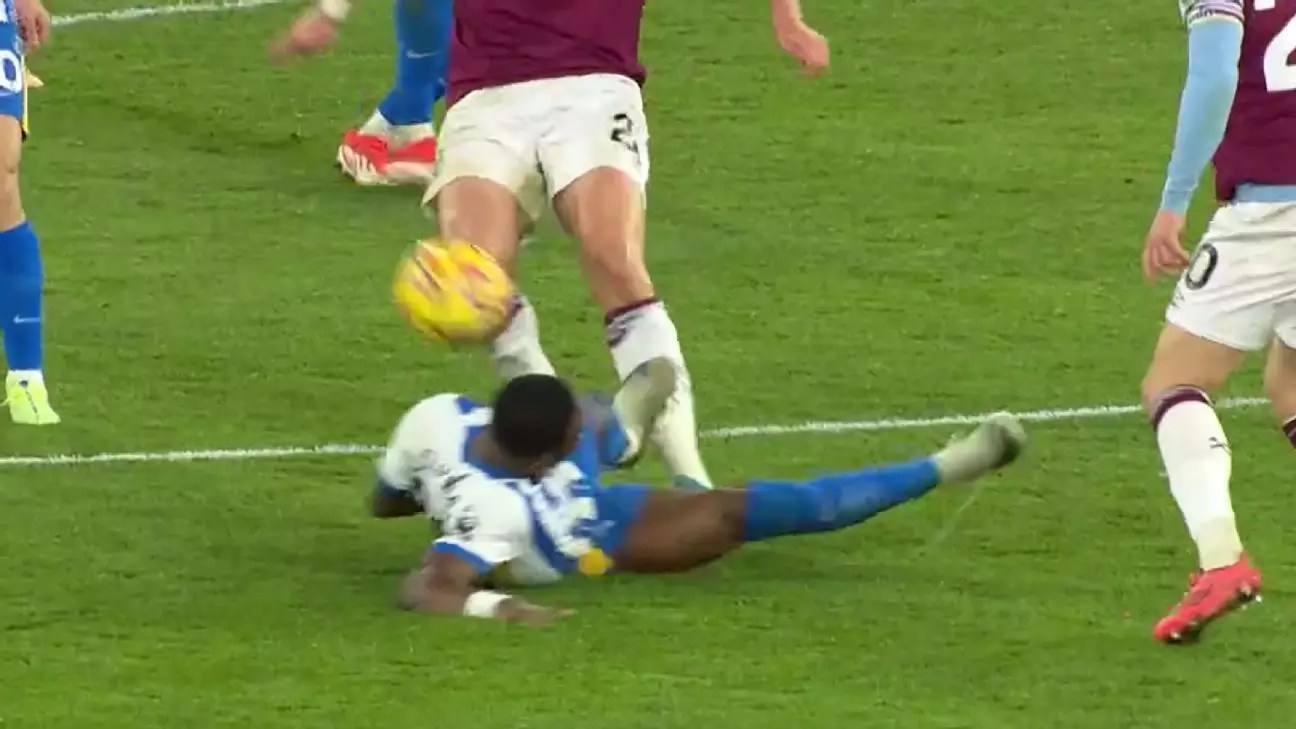The Video Assistant Referee (VAR) has sparked heated debates in English football, especially within the Premier League, where its implementation has been anything but smooth. The primary purpose of VAR is to ensure fair play by reviewing key incidents that occur during matches. However, its usage raises profound questions about the efficacy of decision-making, the accuracy of interpretations regarding the Laws of the Game, and the inherent subjectivity that still affects officiating decisions.
At its core, VAR is designed to assist referees in making critical decisions regarding goals, penalty calls, red cards, and mistaken identities. Each decision is meticulously revisited in the context of established protocols aimed at minimizing human error. However, the controversies that often emerge after matches suggest that the technology, while revolutionary, is still a work in progress. For instance, in a recent match between Brighton and Hove Albion and West Ham United, defender Pervis Estupiñán’s challenge on Max Kilman has become a focal point of debate. Referee Rob Jones issued a yellow card for the foul but did not upgrade the punishment to a red, which many argue was warranted due to the nature of the challenge.
The term “serious foul play” has become somewhat of a paradox in the context of VAR. Under the current regulations, a player is considered to have committed serious foul play if they endanger an opponent’s safety. Referee’s chief Howard Webb has noted that several high-profile cases involving misjudged calls around serious foul play have blemished the reputation of VAR. It appears that the perceived physicality of the Premier League often leads to discrepancies in how fouls are judged. Challenges that would be considered reckless in other leagues can often get overlooked in England due to a different cultural perspective on physicality.
The case of Estupiñán not only fired discussions around his individual foul but also triggered a broader examination of the officiating standards across the league. There is a palpable gap in understanding when VAR intervention should occur, and this inconsistency affects the integrity of the game. Players like Bruno Fernandes and Christian Nørgaard have had red cards rescinded after VAR footage confirmed that the on-field officials had erred in their judgments. These instances raise valid concerns about whether referees and VAR officials are well-equipped to interpret such nuanced situations.
A referee’s perspective on the pitch is often vastly different from how the action is viewed from a replay. The rapid pace of the game, coupled with the referee’s positioning, plays a significant role in the judgment of fouls. In the case of Estupiñán, it is conceivable that Rob Jones’s immediate reaction—the issuance of a yellow card—was a reflection of what he perceived at that moment. However, critics argue that the responsibility of VAR should be to provide a wider lens through which to view the incident, rather than allowing subjective interpretations to stand.
Another controversial incident involved Jordan Pickford’s challenge against Chelsea’s Malo Gusto. Despite the goalkeeper’s aggressive and reckless tactic, no penalty was awarded. This points to a recurring theme where goalkeepers are afforded leniencies that other players would not receive. Pickford’s actions indeed appear as reckless, and the absence of a VAR intervention in such scenarios raises questions about the standards applied across different positions on the field.
The cumulative effect of these decisions and the controversies surrounding them suggests an urgent need for reform and greater transparency in VAR operations. Questions about accountability within the system should also be raised. While individual officials like Paul Tierney and Graham Scott have impressive credentials, their high-stakes roles inevitably come with immense pressure and scrutiny. Observers call for a more collaborative approach that allows VAR officials to engage actively with the game, rather than a passive review of events.
The crux of the issue lies in the balance between human interpretation and technological intervention. The goal of VAR should not solely be to minimize errors but also to enhance the overall quality of officiating in football. Moreover, clearer guidelines need to be established to assist referees in the assessment of serious foul play distinctly.
The integration of VAR into football remains fraught with challenges. The necessity for improvement exists alongside the intentions of fairness and accuracy that underline this technological advancement. By addressing its shortcomings and refining the processes that govern VAR’s application, the Premier League could foster a more equitable competitive environment. Ultimately, it is not merely about getting the right decision on any single instance but about understanding how and why those decisions are made—a transparency that is essential for trust in the game we love.


Leave a Reply